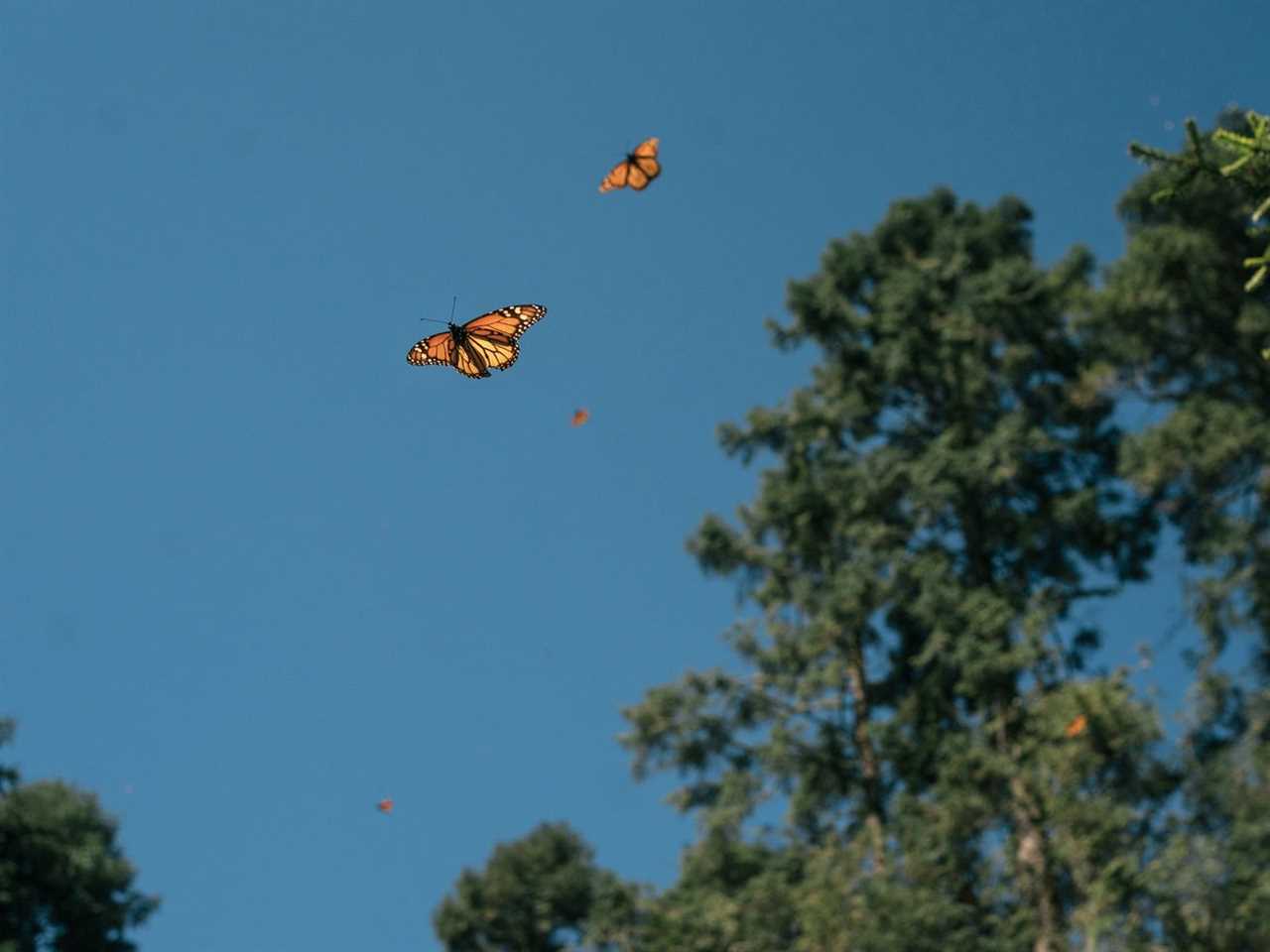
The decline of monarchs that overwinter in Mexico starts thousands of miles away — in US farmland.
Last month, a river of monarch butterflies flowed out of the skies of central Mexico and into a protected mountain range. After flitting into a local forest, they settled into the branches of half a dozen oyamel fir trees, causing them to droop from the weight. Under tens of thousands of butterflies, the firs looked dead. Not a hint of green pierced through the black-and-orange blanket.
Every fall, millions of monarch butterflies from across the eastern US and Canada arrive here, in the Mexican state of Michoacán, and rest in the temperate weather until March. I hiked into the monarch reserve in November with photographer Luis Antonio Rojas and a handful of representatives from a nearby community called El Rosario. I felt like I was in a Disney fairy tale — monarchs were flying all around me. We came across a shallow, spring-fed puddle in the middle of the trail that was attracting butterflies like a magnet. I watched one dip its long, straw-like mouthpiece into the water to drink.
We found the butterfly-covered fir trees by scrambling off the trail and up the mountainside. When you’re staring at hundreds of thousands of monarch butterflies, it’s hard to grasp that the population of this charismatic creature has plummeted. But it has: From one decade to the next, Mexico lost more than half of the monarchs that spend winters here, according to data from the World Wide Fund for Nature (WWF).
Scientists originally suspected the problem was illegal logging in local forests, which are protected as part of the Monarch Butterfly Biosphere Reserve. But as they later discovered, the decline has a lot more to do with what’s happening thousands of miles away in the US. Over the last few decades, industrial farms have decimated grasslands rich in milkweed, the only plants that monarch caterpillars can eat. Less food in the US means fewer butterflies thousands of miles away in Mexico.
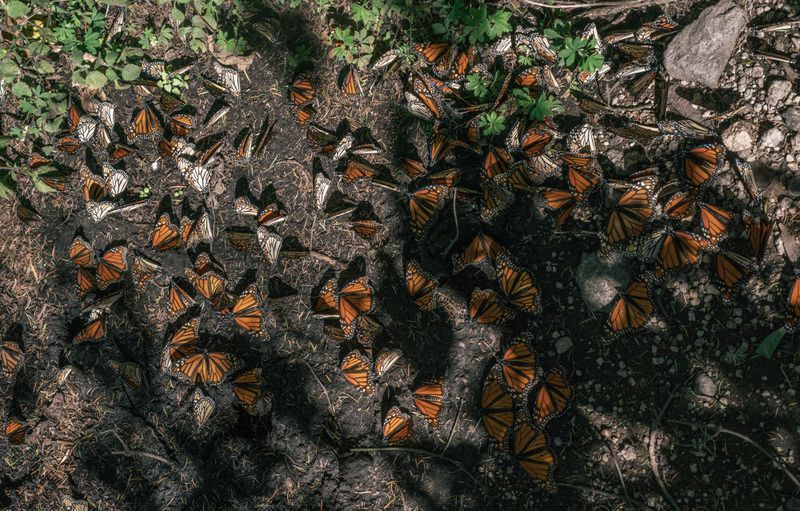
It’s a real-life butterfly effect: Pull a lever in one part of the world and it affects another. And that’s what makes protecting monarchs so challenging. For decades, the leading approach to saving animals has been to set up reserves — refuges where they’re free of harm. But that strategy simply isn’t enough for species with complex and far-reaching migrations.
Monarchs aren’t doomed, but saving them requires a lot of creativity. And it could depend on solving an enduring monarch mystery: Where do these butterflies go when they’re on the move?
An epic journey to Mexico
Monarchs make one of the longest migrations of any insect on Earth. Each fall, millions of them that breed east of the Rocky Mountains — collectively known as the eastern monarch population — fly more than 2,000 miles south over the border and into the reserve, which is about two hours west of Mexico City. The journey takes them two to three months to complete.
It wasn’t until the 1970s that scientists figured out where, exactly, these beautiful winged insects were headed. When locals first came across the monarchs, there were so many insects flying about that they thought the butterflies were a plague, said Pablo Angeles Hernandez, a forest restoration officer at World Wide Fund for Nature Mexico, who grew up near the reserve. “It was spectacular,” he told me.
Soon after arriving in Mexico, the butterflies congregate in several roosts throughout the forest like the one I saw, where they’ll spend the winter. “They’re like hotels,” said Sergio Téllez Guzmán, who helps oversee a sanctuary in the reserve also called El Rosario. Scientists still don’t know exactly how the butterflies choose which trees to roost in, but they suspect it has to do with finding the optimal temperature and moisture. It’s also not clear why the butterflies huddle together at all, though it could be for protection from predators and bad weather.
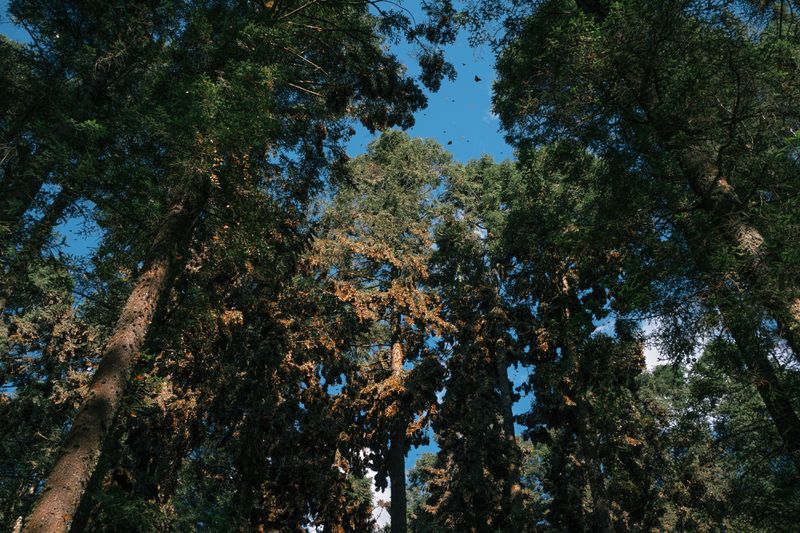
That afternoon, I could hear the monarch roost before I saw it. The collective flutter of thousands of wings sounded like rain falling on a bed of dried leaves. I laid on the forest floor and stared up at the sky: a vivid blue with sporadic streaks of orange and black.
Moments later, I felt a drop of liquid on my forehead. It wasn’t rain, Téllez Guzmán told me, but watery butterfly excrement. Lucky me.
The main reasons monarch populations have plummeted
Commercial logging and small-scale deforestation were once major threats to the forests of the reserve. But butterfly populations here continued to dwindle even when local communities, nonprofits, and the government brought these problems under control in the late 2000s. Between 2000 and 2010, overwintering monarchs covered an average of 14 acres of forests in the reserve; over the next 10 years, that number fell to an average of about 6.5 acres, or about the size of five football fields.
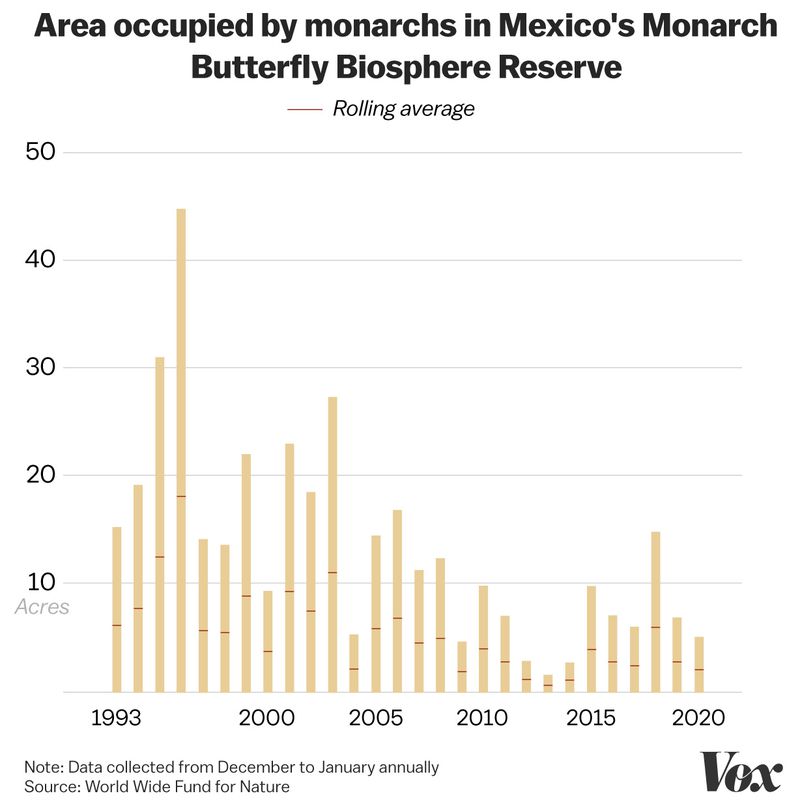
Christina Animashaun/Vox
Scientists looked for threats outside the reserve, and they found a big one: the vanishing of native milkweed plants in the US, which monarch caterpillars depend on. Over the last few decades, it’s been difficult for these tall, green stalks to survive industrial farming that relies on huge amounts of herbicides. Iowa, where I’m from, has lost nearly all of its tallgrass prairie. From 1999 to 2010, the abundance of milkweed in the state declined by nearly 60 percent.
Climate change may be one of the other threats pushing down monarch numbers. It’s messing with weather across their range, which plays a huge role in how many butterflies ultimately arrive in Mexico each year, according to Karen Oberhauser, a monarch expert and professor of entomology at the University of Wisconsin Madison. It’s getting hotter where monarchs breed, for example, and that makes it harder for them to flourish, she said.
There’s still some recent deforestation in the reserve, but the most pressing threats these fragile insects face occur elsewhere. The monarch migration isn’t an escape route from ecosystems that are disappearing. Rather, the butterflies carry their losses with them.
What butterflies bring to Mexico
After leaving the butterfly colony that night, I stopped at a small roadside restaurant for dinner on the way back to Mexico City. Outside, a woman was washing blood from the head of a cow, which still had its eyes and horns intact. I chatted with the chef and her family, who were in and out of the kitchen.
Monarchs, they said, sometimes roost in the trees here, and they’re part of their culture. The butterflies typically start to arrive around Día de los Muertos, the Mexican holiday that honors deceased relatives. For many communities, the butterflies represent the souls of those family members.
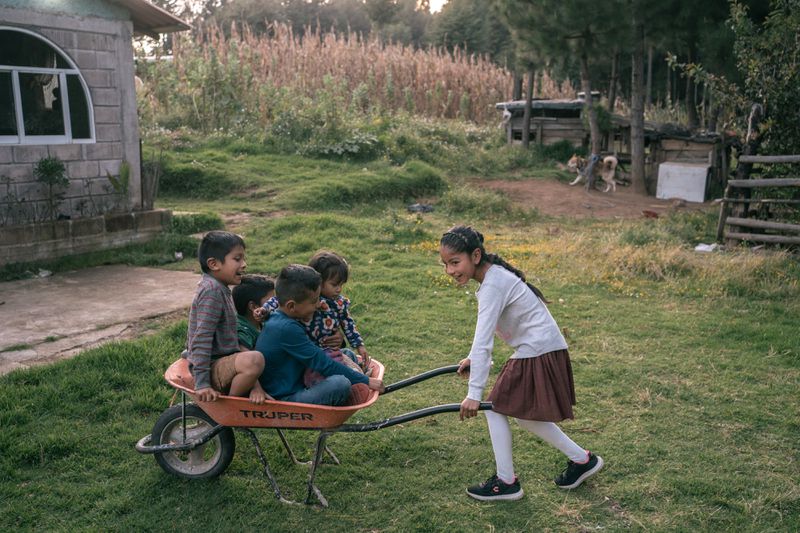
The chef and her family hadn’t noticed a downward trend in the number of monarchs arriving each year, but one of the young girls, named Aline Sofia, said she’d be worried if they stopped arriving. “If they don’t come, the soul of my great-grandmother won’t come,” she told me.
The butterfly’s arrival is also an important economic driver, Téllez Guzmán told me later at a monarch butterfly festival in the nearby town of Zitácuaro. The reserve is a big tourist attraction, and some of the wealth it generates trickles into nearby communities. You can buy, for example, monarch napkins, monarch napkin holders, and monarch earrings.
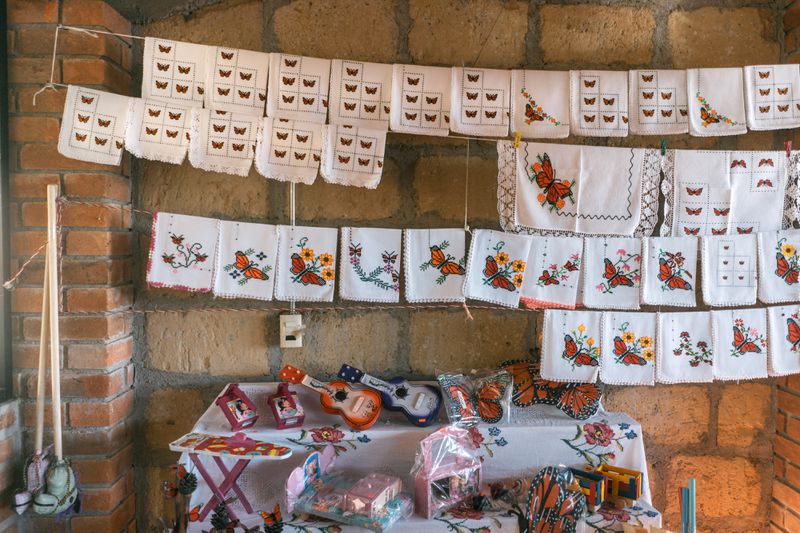
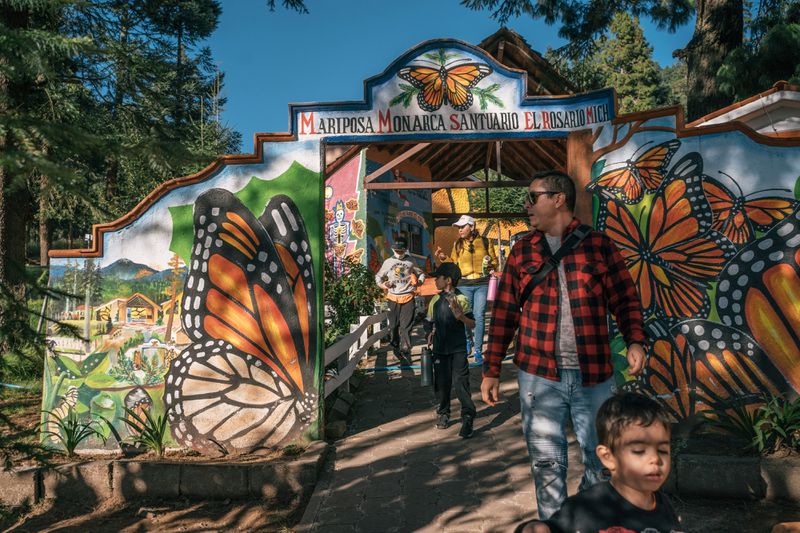
Butterfly-related tourism has provided an alternative source of income for many people who live in the reserve, researchers wrote in a 2013 paper. “Some residents’ living conditions have been considerably improved” through butterfly-related ecotourism, they wrote. (Some scholars have also argued that certain rules in the reserve have led to an increase in organized crime, for complicated reasons.)
But the decline of monarchs has translated into a tourism decline, according to WWF’s Angeles Hernandez. In the mid-’90s and 2000s, there would be as many as 200 tour buses arriving each day at the reserve, he said, but now there aren’t as many. (The Covid-19 pandemic also stalled tourism in the reserve.)
The irony is that tourists from the US and Canada sometimes complain about how there are fewer butterflies than in previous years, Téllez Guzmán said. It’s the US “that cuts their wings,” he said, and protecting the monarchs should be a shared responsibility of all three countries.
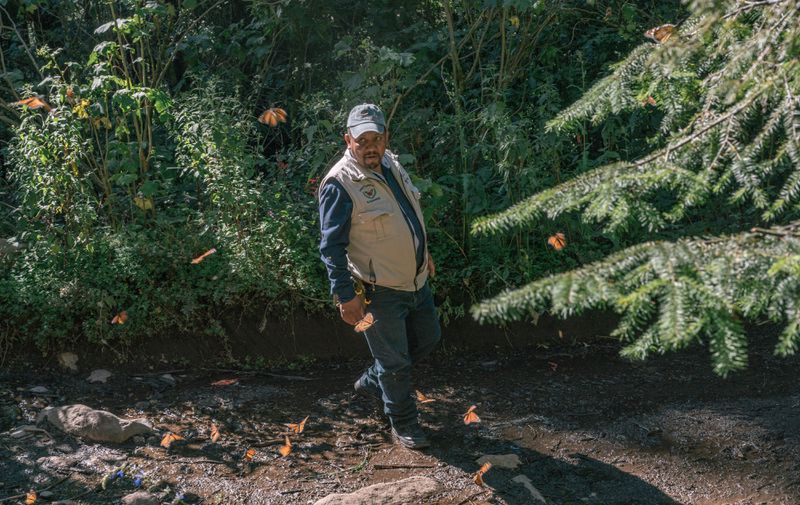
Scientists want to track migrations by attaching tiny computers to butterflies
If protecting the reserve in Mexico isn’t enough to save the monarchs, then what is? Ultimately, Oberhauser said, the US needs to change its agriculture industry so that farming can coexist with native prairies — and the milkweed within them. Farmers should use fewer herbicides, plant a wider variety of crops, and maintain more native habitat on the edge of their farms.
But given the slim likelihood of that happening anytime soon, scientists are looking at other options, such as developing a loose patchwork of reserves throughout the monarch’s migratory range. They would function like rest stops along a quiet highway — places for the monarchs to recharge on their long migratory track.
The challenge is that scientists still aren’t sure where, exactly, that journey takes them, said D. André Green II, an assistant professor of ecology and evolutionary biology at the University of Michigan Ann Arbor, who studies monarchs. “That’s the million-dollar question for us,” he said.
Researchers have traditionally tracked monarchs by gently placing small, unique stickers on their wings. You could mark butterflies, say, in Iowa, and then look for those same individuals in the trees in Mexico. That tells you how far they’ve traveled, but it doesn’t reveal much about the path they took to get there.
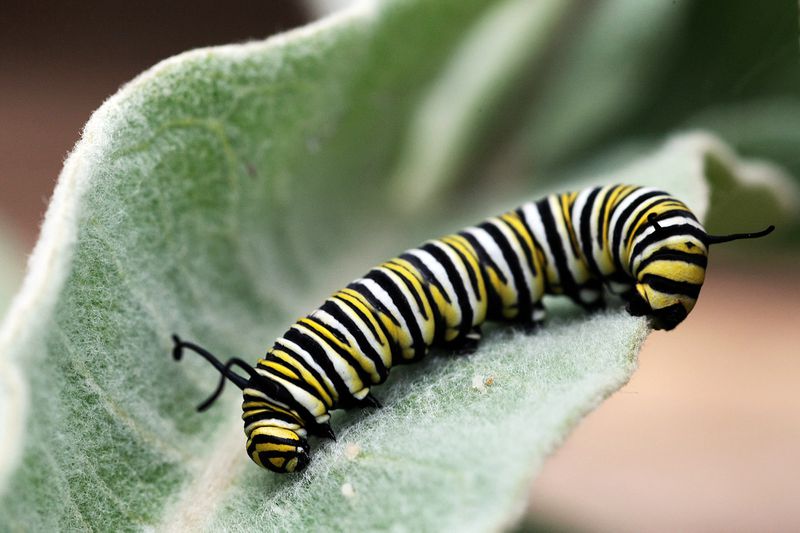
Gary Friedman/Los Angeles Times via Getty Images
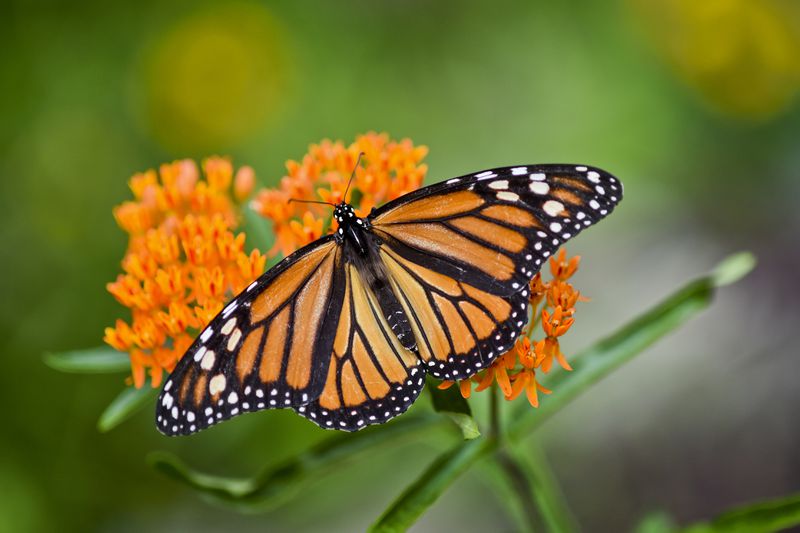
Natalie Kolb/MediaNews Group/Reading Eagle via Getty Images
Green is working on another approach, which relies on tiny computers — the world’s smallest computers, according to a recent press release — to track the monarch’s movement. The computers record light and temperature and they can be glued to the butterflies. Software later analyzes the recorded information to determine the monarchs’ location over time.
Ultimately, Green said, the data they collect could help scientists figure out where monarchs are most urgently in need of safe havens. If they discover, for example, that a large number of butterflies pass through a particular region in the US each year that has no suitable habitat, they could use that information to justify a local restoration project, Oberhauser said.
The good news is that, while monarchs are picky about what they eat, milkweed can grow in all kinds of conditions — in roadside ditches, next to massive farms, and in urban backyards. (Here’s a short guide to growing milkweed, in case you’re interested.) When they have plenty of food to eat and the temperature is right, monarchs can rebound pretty quickly, Oberhauser said. “They lay hundreds of eggs, and good conditions can lead to quick increases in their numbers.”
Consider what happened this fall in California, where monarchs that live west of the Rocky Mountains overwinter. Last year, volunteers in California counted fewer than 2,000 butterflies, but this year there are more than 100,000 of them. “There’s no way to look at those numbers and not be hopeful,” Oberhauser said.
At the reserve, lying on the ground and surrounded by butterflies, I felt so distant from the forces harming them. Yet the monarchs are a reminder that the world is actually highly connected, and in ways we’re only just starting to understand. Farming in Iowa not only affects the ecosystems of Mexico, but the culture as well. If you give butterflies a helping hand in just one place, the benefits can reach halfway across the continent.
Luis Antonio Rojas contributed reporting to this article.
----------------------------------------
By: Benji Jones
Title: The monarch is falling victim to a real-life butterfly effect
Sourced From: www.vox.com/down-to-earth/22823993/monarch-butterflies-mexico-milkweed
Published Date: Tue, 14 Dec 2021 15:00:00 +0000
Did you miss our previous article...
https://consumernewsnetwork.com/politics-us/bonsai-the-delicate-art-of-feeling-better






